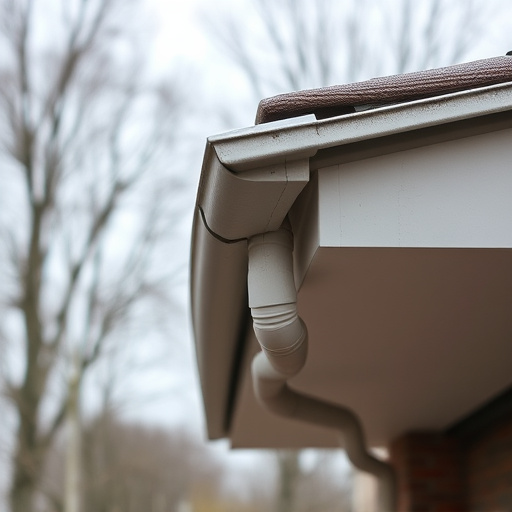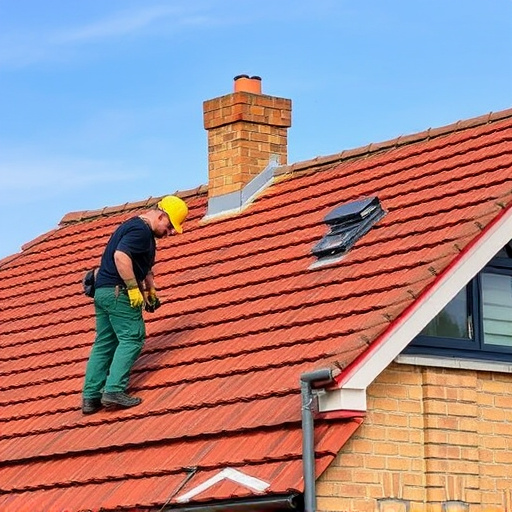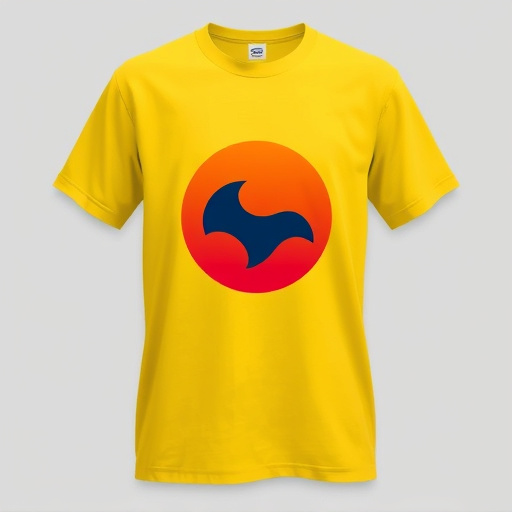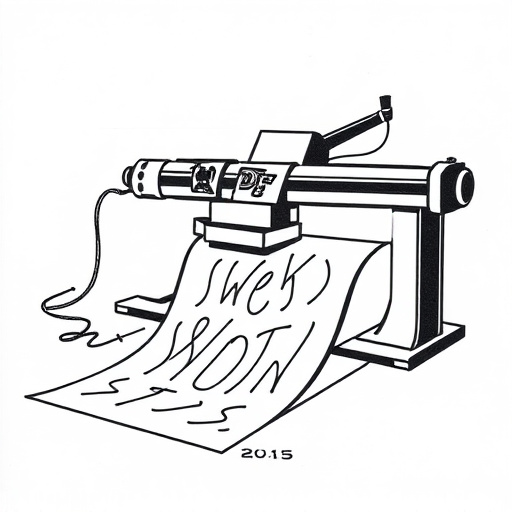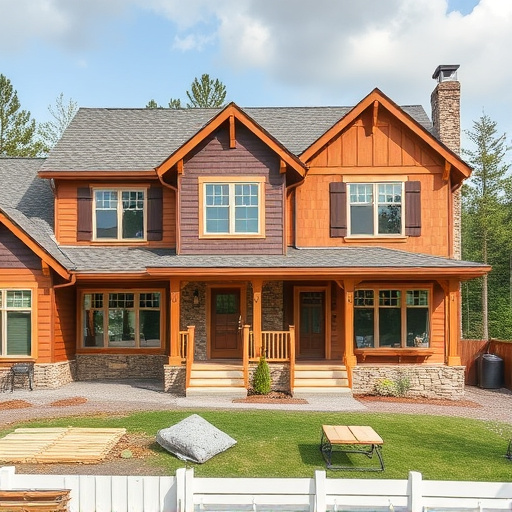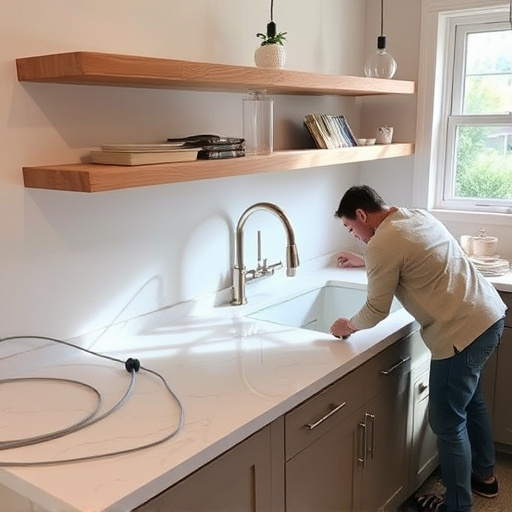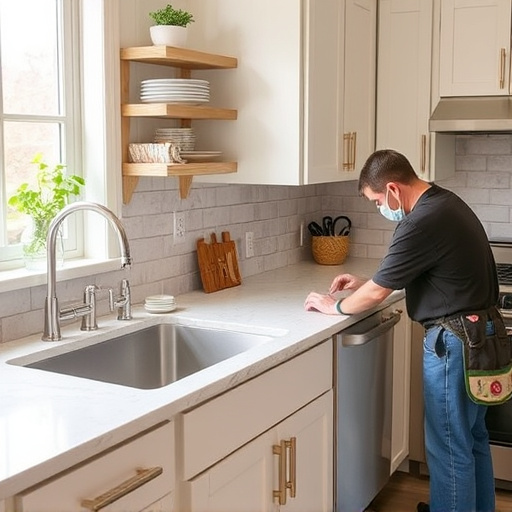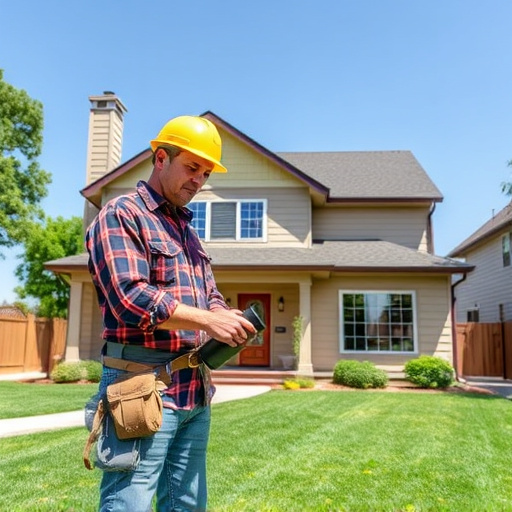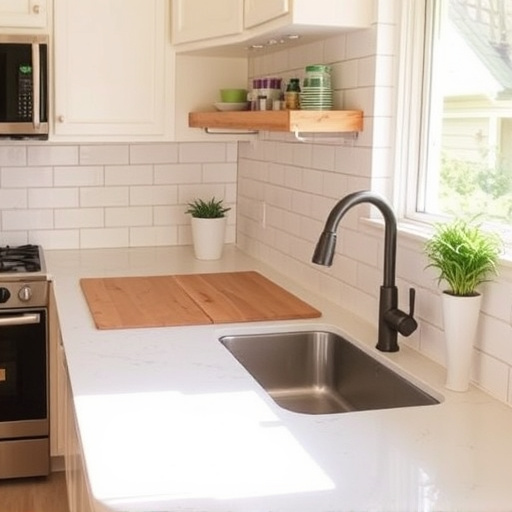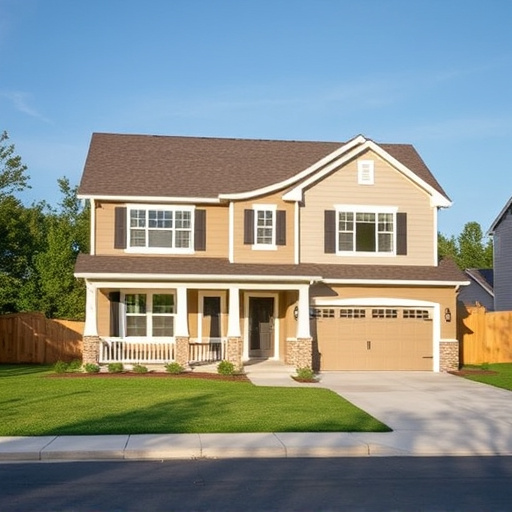By 2025, cabinet design will merge sustainability and smart technology with timeless elegance and contemporary trends. Natural materials like reclaimed wood and stone will be favored for eco-friendliness and visual appeal, while minimalist designs with clean lines and neutral palettes will remain popular. Customization options will allow homeowners to express their personalities. Smart features such as touch-sensitive controls and voice activation will transform cabinets into modern extensions, offering both functionality and aesthetic appeal through innovative storage solutions and hardware. The industry shift towards eco-friendly practices includes recycled woods, bamboo, and plant-based composites, aligning with current renovation trends for energy-efficient and aesthetically pleasing spaces.
In the ever-evolving realm of interior design, 2025 promises transformative trends in cabinet design. This article explores what leading designers predict for the future of kitchens and bathrooms. From sustainable materials and captivating color palettes to the seamless integration of smart technology and enhanced ergonomics, we delve into the elements reshaping our living spaces. Discover trending styles, automated features, and innovative designs catering to diverse user needs, as we navigate the landscape of modern cabinetry.
- Trending Styles and Materials for 2025 Cabinets
- – Exploring popular design trends anticipated in cabinetry for 2025
- – Discussion on sustainable materials gaining traction in the industry
Trending Styles and Materials for 2025 Cabinets
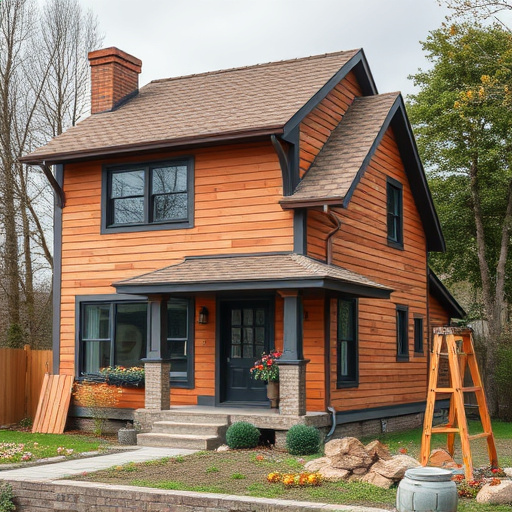
In 2025, cabinet design is poised to evolve with a blend of timeless elegance and contemporary trends. Among the standouts are natural materials like reclaimed wood and stone, which promise to bring a sense of warmth and durability to kitchens and bathrooms alike. These organic elements not only enhance visual appeal but also offer an eco-friendly twist, aligning with growing consumer preferences for sustainable living spaces.
Beyond materials, several styles are expected to dominate the landscape. Minimalist designs with clean lines and neutral palettes will continue to captivate, while customisation remains a key driver, allowing homeowners to express their individuality. As interior designers predict, incorporating unique hardware and clever storage solutions will be crucial in making cabinets both functional and aesthetically pleasing. Moreover, the integration of smart technology, such as touch-sensitive controls and voice-activated features, is set to transform cabinet design into a seamless extension of modern living.
– Exploring popular design trends anticipated in cabinetry for 2025
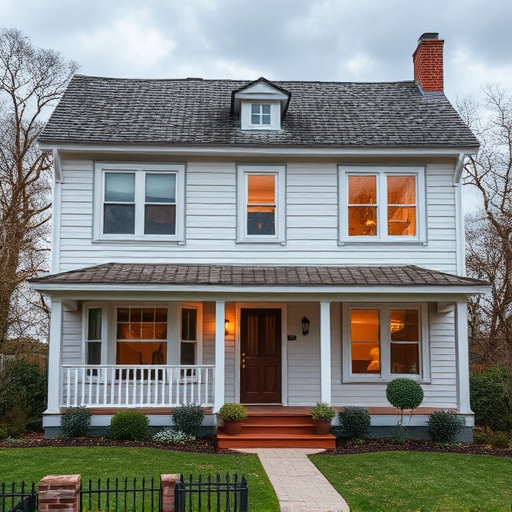
The year 2025 promises to be a thrilling time for cabinet design, with interior designers anticipating several popular trends that will shape functional spaces. One prominent theme is the integration of smart technology, where cabinets will not only serve as storage solutions but also become connected components that enhance daily routines. Expect to see more automated features such as touchless opening mechanisms and integrated lighting systems that adjust based on ambient light.
Additionally, sustainability remains a key focus, driving the adoption of eco-friendly materials and designs. Natural, renewable woods, recycled metals, and sustainable finishes will be favored, promoting both aesthetic appeal and environmental responsibility. As renovation services continue to gain popularity, cabinet designers are expected to blend innovation with timeless styles, ensuring that spaces not only look modern but also stand the test of time. This balance between functionality and aesthetics is crucial in creating beautiful yet practical cabinets for various room configurations, even when considering floor replacements as part of a broader home transformation.
– Discussion on sustainable materials gaining traction in the industry
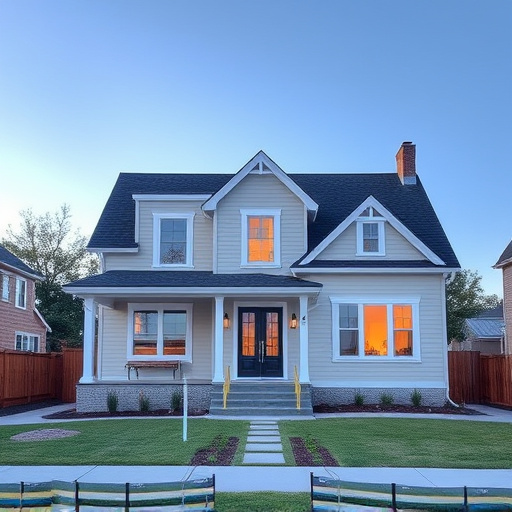
In recent years, there’s been a growing trend among interior designers advocating for sustainable materials in cabinet design. This shift isn’t just about aesthetics; it reflects a broader industry movement towards eco-friendly practices. As consumers become more conscious of their environmental impact, demand for eco-friendly cabinets is rising. Designers are responding by incorporating recycled woods, bamboo, and plant-based composites into their projects. These materials not only reduce the carbon footprint but also offer unique visual appeals that can elevate any space, from sleek modern kitchens to charming rustic bathrooms.
Beyond the environmental benefits, sustainable cabinet design aligns perfectly with current trends in residential renovations, particularly in bathroom remodel projects. As folks seek ways to make their homes more energy-efficient and aesthetically pleasing, designers are leveraging these materials to create stunning, functional spaces. The use of sustainable materials not only contributes to a greener planet but also ensures that homes remain beautiful and relevant for years to come, showcasing a harmonious blend of form and function in both luxurious and eco-conscious bathroom renovations.
As we look ahead to 2025, interior designers predict a future where cabinet design blends innovative trends with sustainability. Natural materials and eco-friendly finishes will continue to gain prominence, reflecting a growing conscious consumer base. Modern aesthetics will be redefined through sleek lines, minimalist designs, and thoughtful integrations of technology, ensuring cabinets remain both functional and stylish. This evolution in cabinet design promises to enhance living spaces, catering to the evolving needs and preferences of homeowners while minimizing environmental impact.



